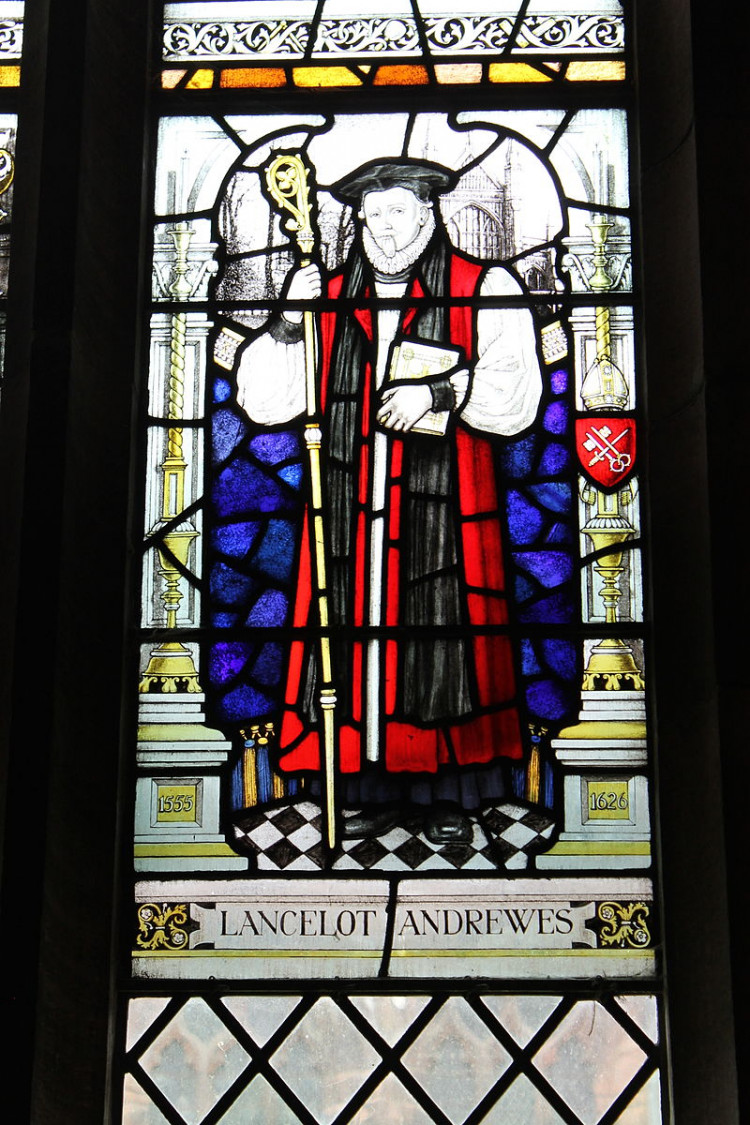Man of learning with Horndon roots whose place is marked in history
By Neil Speight 13th Dec 2022
By Neil Speight 13th Dec 2022

Susan Yates contributes the latest in her series of occasional features for Thurrock Nub News on historical subjects. Here Susan, chair of Thurrock Hiistory Society, reflects on the life of a man with links Horndon on the Hill, who rose to high office.
-----------------------------------------
I RECENTLY visited London and for all its modern buildings some areas have not changed.
I walked down Seething Lane like I used to when going to work and just as it was all those years ago, I could see the Tower of London to my left and straight ahead was the church of All Hallows Barking (from its connection with Barking Abbey) on Tower Hill.
I stood in front of the northern doorway and looked up at the three statues above it especially the one on the right which is of Bishop Lancelot Andrewes who was born in 1555, the son of Thomas and Joan Andrewes in the parish of All Hallows, Barking.
Lancelot's father Thomas was born in Horndon on the Hill and owned property there but died in All Hallows Barking where he lived and worked as a master mariner and Master of Trinity House. The Corporation of Trinity House was set up by a Royal Charter of Henry VIII in 1514 with the safety of shipping and the well-being of seafarers as its prime concern.
Lancelot was the eldest of thirteen children. He was a great scholar with a particular gift for languages.He was educated first at Coopers' Free School, then the Merchant Tailors' Free school. By the age of 16 he had already mastered Greek and Hebrew and became a student at Pembroke Hall, Cambridge.
On obtaining his bachelor of arts degree he was elected a fellow of Pembroke College in 1575. He achieved his masters degree in 1578 and in 1580 he was ordained deacon. He was made Dean of Westminster in 1601 and it was whilst in that role that he headed the commission responsible for translating the Bible into English. His particular efforts were concentrated on the first part of the Old Testament.
He was consecrated Bishop of Chichester on 3rd November 1605 and in the same year was made Lord High Almoner.
Lancelot Andrewes disliked all sports and frivolous pleasures. His only recreation was walking on his own. When he was at Cambridge he would walk there from London and only stopped when it was suggested he did it through meanness.
He became Bishop of Ely on 22nd September 1609 and was made a Privy Counsellor of England on 29th September 1616. He was created Dean of the Chapel Royal from 1st January 1619. The Chapel Royal is situated within the grounds of St James's Palace and is steeped in Royal history being the location for many Royal weddings and christenings.
Later in 1619 he was made Bishop of Winchester and a member of the Most Notable Order of the Garter.
Andrewes often said:
"Two things I recognise O Lord in myself:
Nature, which thou haste made;
Sin which I have added. "
And
"He who hath two coats let him impart to him that hath none."
History records Andrewes as a saintly man but he was guilty of nepotism. Whilst he declined several bishoprics because of simony (simony is the act of selling church offices and roles or sacred things), he did give such livings as were within his gift to members of his own family, especially his brother Roger who also worked on the translation of the Bible.

Roger was not like his brother and in 1631 was found to be embezzling funds from Jesus College Cambridge. Lancelot who had died on 25th September 1626 was held in such high regard that Roger, rather than being dismissed was asked to resign.
Lancelot is alleged to have held the manors of Malgraves in Horndon on the Hill and Goldsmiths in Langdon, inherited from his father, and although in his will he left £10 to the poor of the village I have been unable to date to find proof of his holdings.
However, Thomas his nephew did hold Gore Ox Farm in 1626 and his daughter Ann took the Manor of Malgraves to Thomas Cotton on their marriage.
Great Malgraves as it is now known is Grade II listed and was built in the 16th century with 17th century alterations and extensions.
Bishop Lancelot Andrewes was buried on 11th November 1626 in St. Saviours Church, Southwark, now known as Southwark Cathedral. His body lies under a rather splendid monument.
CHECK OUT OUR Jobs Section HERE!
thurrock vacancies updated hourly!
Click here to see more: thurrock jobs
Share:
















